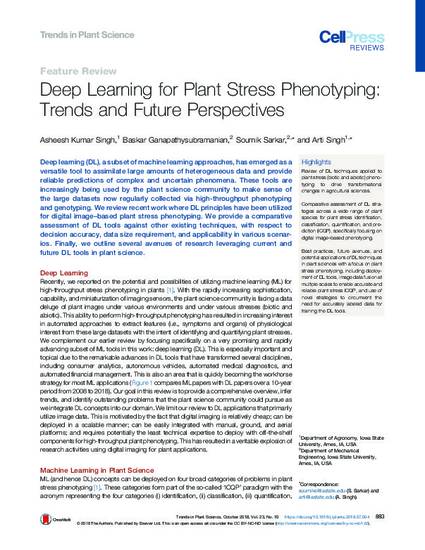
Deep learning (DL), a subset of machine learning approaches, has emerged as a versatile tool to assimilate large amounts of heterogeneous data and provide reliable predictions of complex and uncertain phenomena. These tools are increasingly being used by the plant science community to make sense of the large datasets now regularly collected via high-throughput phenotyping and genotyping. We review recent work where DL principles have been utilized for digital image–based plant stress phenotyping. We provide a comparative assessment of DL tools against other existing techniques, with respect to decision accuracy, data size requirement, and applicability in various scenarios. Finally, we outline several avenues of research leveraging current and future DL tools in plant science.
Available at: http://works.bepress.com/asheesh-singh/36/

This article is published as Singh, Asheesh Kumar, Baskar Ganapathysubramanian, Soumik Sarkar, and Arti Singh. "Deep learning for plant stress phenotyping: trends and future perspectives." Trends in plant science 23 (2018): 883-898. doi: 10.1016/j.tplants.2018.07.004.